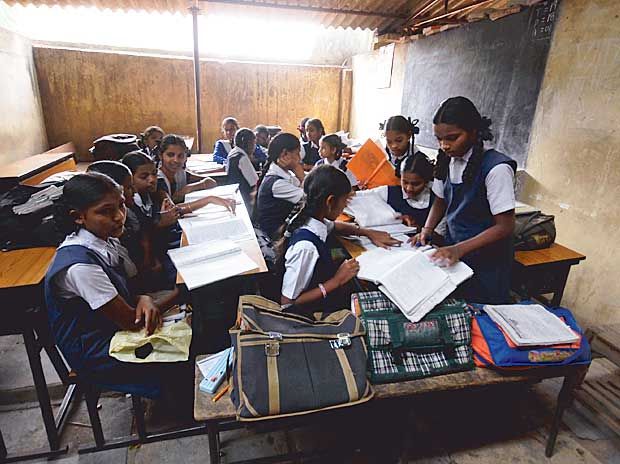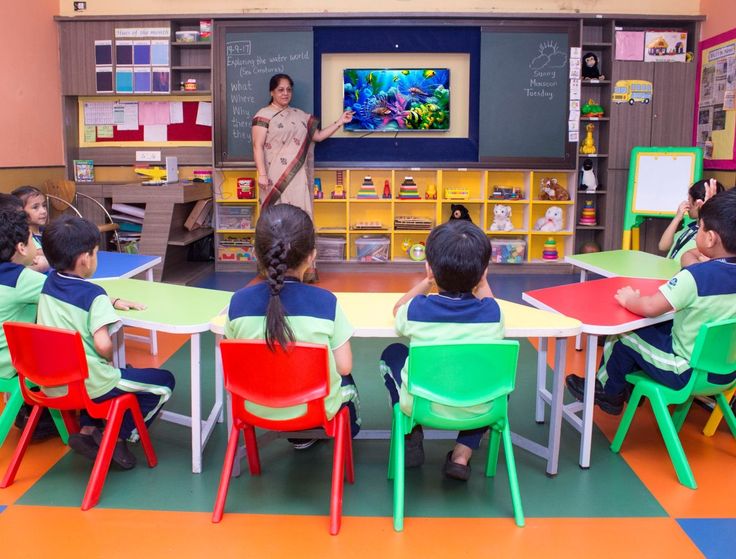“Education: Right or Privilege?”

Education is a fundamental right, yet in today’s world, it has become a privilege that only the financially capable can afford. For middle-class families, providing higher education to their children often means sacrificing their entire life’s savings. As the cost of living rises, the cost of education is increasing even faster. Parents are forced to take loans, mortgage their assets, or even sell their land to ensure that their children receive quality education.
But the question remains—should education be a burden, or should it be a fundamental right accessible to all?
🎓 The Education Struggle of the Middle Class

For a middle-class family in India, the biggest financial stress is not just buying a house or securing a stable job—it is ensuring their children receive a good education. The education sector in India has been divided into two:
- Government Schools: Poor infrastructure, outdated curriculum, and inefficient teaching staff.
- Private Schools: High fees, expensive tuition, and an elitist approach to education.
Parents who cannot afford expensive private schools often feel trapped. They either:
✅ Send their children to low-quality government schools, risking their future.
✅ Take heavy loans to afford private education, pushing themselves into financial distress.
This situation forces middle-class families into a cycle of sacrifices. They work overtime, cut down on personal expenses, and even compromise on healthcare—all to afford better education for their children.
🏫 Government Schools vs. Private Schools
Today, no middle-class parent wants to send their child to a government school. The reasons are obvious:
🔴 Poor Infrastructure: Many government schools lack basic facilities like clean toilets, proper classrooms, and libraries.
🔴 Lack of Qualified Teachers: Many government school teachers are either underqualified or unmotivated.
🔴 Outdated Curriculum: The syllabus is not aligned with modern industry needs.
🔴 No Emphasis on English & Soft Skills: In a competitive world, English proficiency and soft skills are crucial, but most government schools fail to provide them.

In contrast, private schools offer:
🟢 Better Infrastructure – Well-maintained classrooms, smart boards, and sports facilities.
🟢 Skilled Teachers – Regularly trained and better paid.
🟢 Focus on English and Global Curriculum – Helping students secure better job opportunities.
🟢 Extracurricular Activities – Enhancing overall personality development.

However, these benefits come at a steep price—fees in private schools range from ₹1 lakh to ₹10 lakh per year, which is beyond the reach of most middle-class families.
🌍 International Education Models: Learning from the Best

Several countries around the world have proven that quality education can be free and accessible to all. Here are some of the best examples:
Finland
✅ Completely free education for all students.
✅ No private schools—government schools are of the highest quality.
✅ Focus is on creativity and problem-solving rather than rote learning.
Germany
✅ Free university education, even for international students.
✅ Strong focus on practical learning and vocational training.
Sweden
✅ Free schooling from kindergarten to university.
✅ Curriculum designed to encourage critical thinking and independence.
These models prove that education does not need to be expensive—it just needs proper government policies and investment.
The Arvind Kejriwal Model: A Success Story in India

While most Indian states struggle with poor education systems, Delhi has seen a remarkable transformation in government schools under the leadership of Arvind Kejriwal and Manish Sisodia. Here’s what they did:
✔ Infrastructure Upgrade – Schools were renovated to match private schools.
✔ Teacher Training – Teachers were sent abroad for advanced training programs.
✔ Innovative Curriculums – Introduced Happiness Curriculum and Entrepreneurship Mindset to make learning engaging.
✔ Better Results – Many government schools in Delhi now outperform private schools in board exams.
This proves that if political will exists, government schools can compete with private schools and provide high-quality education.
🎬 Movies That Expose the Government Schools
Hindi Medium: The Struggle for Private School Admissions
Movies have often reflected the harsh reality of India’s education system, especially the struggles of middle-class families with government schools. Hindi Medium (2017) is a perfect example, showcasing how parents go to extreme lengths—sometimes even pretending to be poor—to secure admission for their children in elite private schools. The film highlights the deep flaws in the system, where quality education is often reserved for the wealthy, while the middle class is stuck between unaffordable private schools and poorly managed government schools.
Madam Geeta Rani: Transforming Government Schools
On the other hand, Madam Geeta Rani (2020) presents an inspiring story of how government schools can be reformed. The film follows a determined headmistress who takes charge of a failing government school and brings about a revolutionary change. Through her leadership, the school transforms into a place of quality education, proving that with proper policies and commitment, government schools can compete with private institutions. This story serves as a powerful reminder that improving public education is not impossible—it just needs the right intent and execution.
🔍 Solutions: How Can We Fix This?
The only way to reduce the financial burden of education on the middle class is to improve government schools and regulate private education. Here are some key steps:
1️⃣ Government Schools Need Urgent Reform
The biggest reason why middle-class families struggle is the poor quality of government schools. To fix this, the government must:
✅ Invest in infrastructure (smart classrooms, libraries, sanitation).
✅ Hire and train better teachers.
✅ Upgrade the curriculum to match global industry demands.
2️⃣ Make Higher Education Affordable
✅ Implement free or subsidized higher education like Germany.
✅ Provide interest-free education loans for middle-class students.
3️⃣ Regulate Private School Fees
✅ Private schools should be monitored to prevent excessive fees.
✅ A cap on annual fee hikes should be enforced.
4️⃣ Free Education for All Until Class 12
✅ Just like Finland and Sweden, India should make school education completely free to reduce financial pressure on families.
If the government truly wants to support the middle class, it must make education a right, not a business. When parents no longer need to sacrifice their entire savings for their children’s education, only then can India progress as a truly developed nation.
Vidya
Author
sawarkarvidya15@gmail.com
Related Posts

The Unseen Hero: A Day in the Life of an Indian Woman
In the heart of every Indian household, there exists a silent warrior—the woman who juggles multiple roles as a working professional, a...
Read out all
“कुंभ: समुद्र मंथन से आत्ममंथन की ओर”
कुंभ: अमरत्व की खोज और आत्ममंथन का महत्व समुद्र मंथन की प्राचीन कथा केवल एक पौराणिक गाथा नहीं है, बल्कि यह हमारे...
Read out all
मकरसंक्रांति: त्योहार एक रूपअनेक
परिचय: मकर संक्रांति भारत का एक प्रमुख त्योहार है, जो हर साल 14 या 15 जनवरी को मनाया जाता है। यह त्योहार...
Read out all
“The last year Reflections, guide to new year action”
Introduction As the final days of the year draw near, the calendar turns its page, inviting us into a fresh chapter. It’s...
Read out all
The Emotional Depths of Pushpa movie: Five Elements That Tug at Your Heartstrings
https://thinktoomuch.in/web-stories/five-emotinal-moments-that-made-pushpa-2-unforgettable/ The Emotional Depths of Pushpa movie: Five Elements That Tug at Your Heartstrings Introduction: Cinema has long been a powerful tool...
Read out all
How can history help in daily life?
The question “How can history help in daily life?” explores the practical relevance of historical knowledge in contemporary living. History is not just about...
Read out all